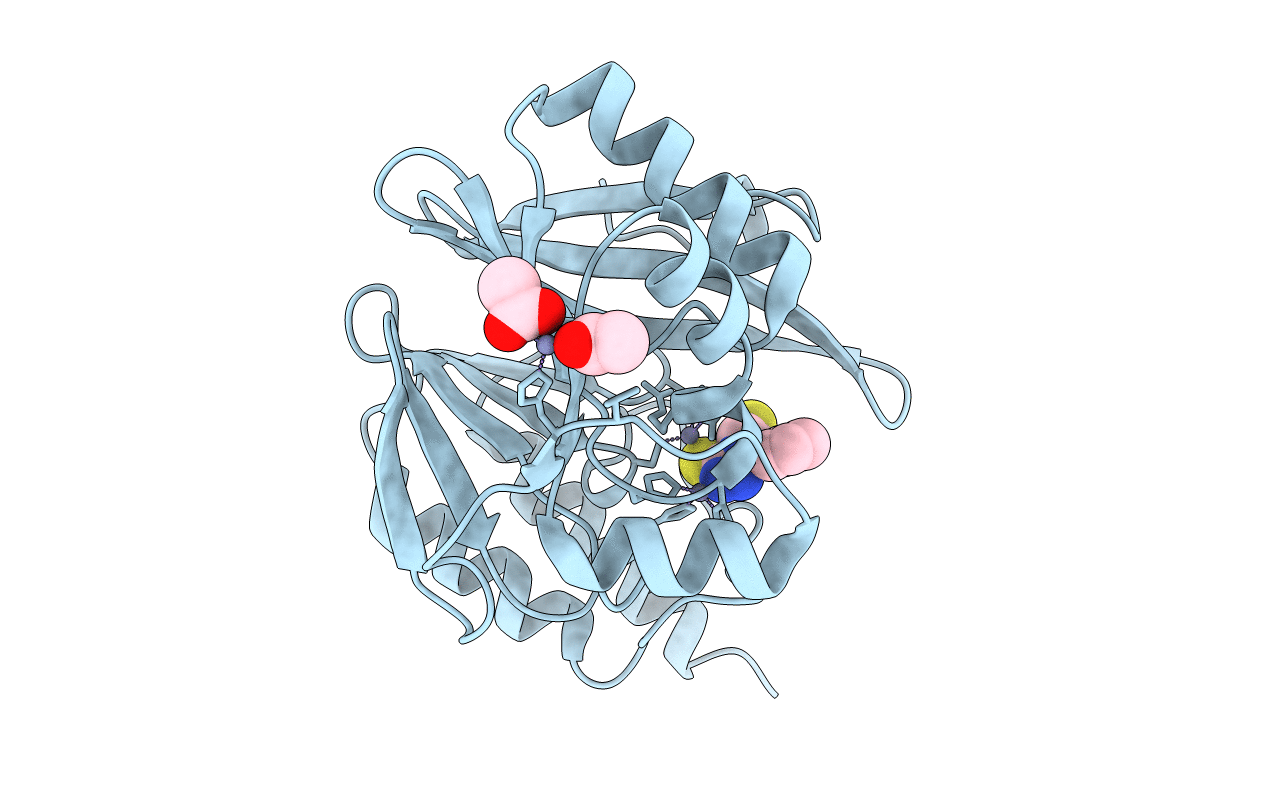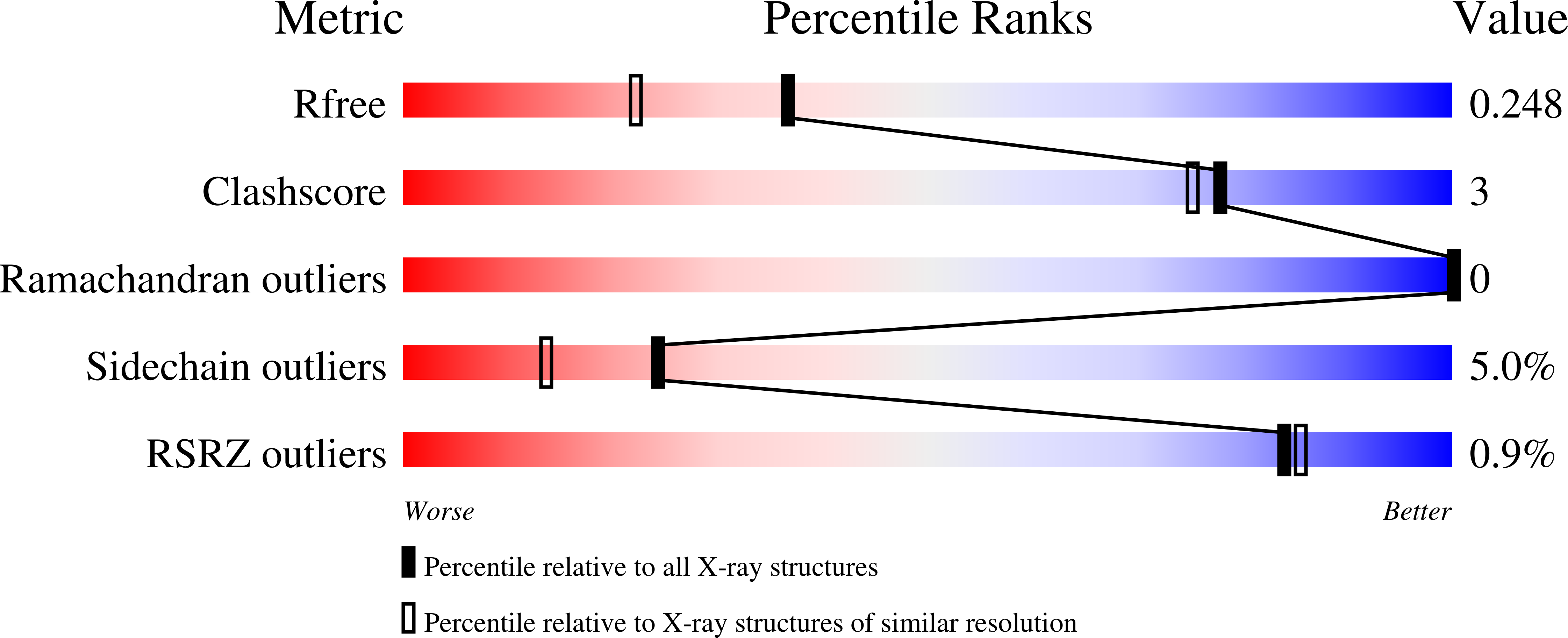
Deposition Date
2021-06-14
Release Date
2021-10-20
Last Version Date
2024-01-31
Entry Detail
PDB ID:
7OVE
Keywords:
Title:
Crystal structure of the VIM-2 acquired metallo-beta-Lactamase in Complex with compound 10 (JMV-7210)
Biological Source:
Source Organism:
Pseudomonas aeruginosa (Taxon ID: 287)
Host Organism:
Method Details:
Experimental Method:
Resolution:
1.92 Å
R-Value Free:
0.24
R-Value Work:
0.19
R-Value Observed:
0.19
Space Group:
I 2 2 2


